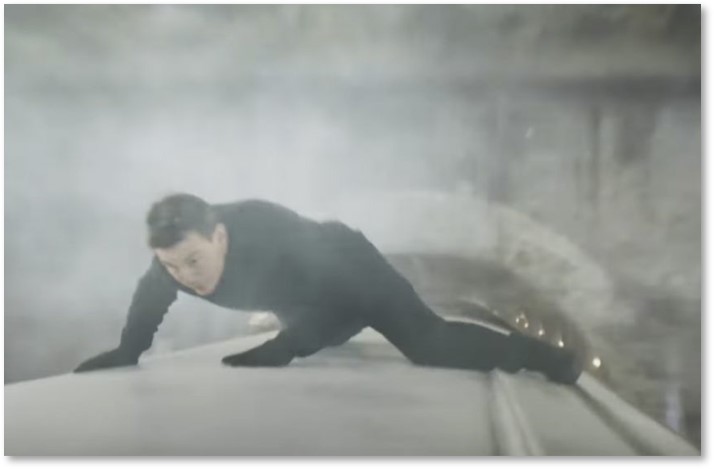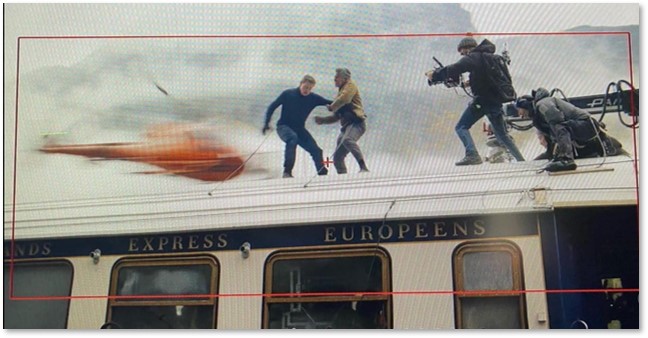I read an article recently about teenagers engaging in “train surfing.” Like every other idiotic teenage fad (eating Tide Pods, swallowing cinnamon), it’s spreading around the world with the speed of the internet. The only problem is that train surfing can quickly turn lethal.
Train surfing, if you’re not familiar with the term, is defined as, “riding on the outside of a moving train, tram or other form of rail transport.” More specifically: standing, running and jumping on the top of a moving train.
Train surfing is not new: its roots go back a century and in crowded countries like India and Pakistan it happens every day. But train surfing has gained new popularity among the world’s youth recently, whether in New York City, London, Sydney, or other cities of the world. This is not a matter of commuting to work on a jam-packed train; instead, it’s done for fun. Foolhardy teens—mostly male—have their acts of derring-do videoed by friends and then posted on web sites like Tik-Tok.
A New Popularity
But why the sudden popularity? What has brought train surfing back into the limelight? Possibly—just possibly—it might be stunts like those seen in two of the summer’s big — action movies.
Take “Indiana Jones and the Dial of Destiny.” This movie opens with a long (very long, as long as the train, seemingly endless) chase that takes the characters through a passenger train moving at high speed through the French Alps. The three men chase one another between cars and up onto the roof. There, Indy, his partner, and the villain engage in a back-and-forth “duel” along the top of the train.
If that’s not enough, we have “Mission Impossible: Dead Reckoning Part One”—a movie with a title almost as long as the train. Here, Evan Hunt engages in the same kind of chase through the Orient Express on its way to Innsbruck. The characters run between the cars, climb from one car to another on the side, and jump across cars on top of the moving train.
Dangerous and Illegal
Train surfing is, of course illegal. I’m sure that for some of the participants, this increases its allure.
Plus, they get to add some excitement to their lives by acting like an action hero of the big screen. What young man doesn’t want to be as engaging as Indiana Jones or as competent as Evan Hunt? After all, if the actors can do it, anyone can.
And we know some of the actors can do it. Tom Cruise famously does his own stunts, and it is quite clear in the Mission Impossible movies that it’s him and not a stunt double doing those impossible things. But, no, he didn’t really drive a cross-country bike off a mountain, although it sure looked authentic.
The young men engaging in real-life train surfing fail to note the difference between movies—where actors and their stunt doubles are protected by wires and harnesses, safety mechanisms and fool-the-eye cinematography—and reality. In the photo below, for example, notice the safety cables anchoring both the actors and the cinematographers.
Also, they don’t realize that some of the effects are CGI or shot in a studio. The scene where Ethan Hunt’s little Fiat goes down Rome’s Spanish Steps, for example, was shot in a studio, not on location. But a real train has no safety mechanisms for people riding and doing stunts on the outside.
Perfect Timing
In the movies, actors have perfect timing. They always see and duck away from dangers like oncoming railroad signal bars and approaching tunnels. In both of this summer’s films, this dance with death is almost played for laughs.
The actors duck train signals and always spot oncoming tunnels in time to drop to safety. At one point, the train goes into a tunnel with Indy lying face-down on top of the car. There is so little clearance that his iconic leather jacket scrapes along the tunnel’s roof. When he emerges, his jacket is, of course, unscratched. How they spot this tunnel in the swirl of smoke coming from the engine remains unclear.
In the movies, train signal bars are probably made of break-away balsa wood. In the real world, they are made of steel and definitely don’t crumple on impact.
This perfect timing comes to us, of course, via multiple takes and retakes. The mistakes hit the cutting-room floor while we see only what worked perfectly. In real life, train surfers hit the tracks in front of or in between cars.
In Real Life
On a real train, surfers have a very good chance of suffering horrendous injuries. Even Tom Cruise broke his real-life ankle doing a parkour stunt during the filming of Mission Impossible: Fallout.
You can find a list of train surfing injuries on Wikipedia and they are truly awful. Injuries range from “one mistake and you’re dead” to electric shocks, multiple fractures, loss of limbs, and loss of part of a skull. The list is gruesome enough to serve as a warning but, hey, when did that ever work? You can even see the videos, although I can’t imagine wanting to see them.
(I won’t add to the fad’s publicity by publishing one
of the many shots available on the Internet.)
There’s nothing like a little afternoon fun that leaves you with lifelong injuries and/or missing body parts—or that puts an end to your life altogether. For added excitement, don’t tell your parents what you’re doing, so when the police show up at your door with very bad news, they will be completely shocked. After all, they thought you were playing Call of Duty with your friends.
Glorifying Train Surfing
It would be great if the movies didn’t glorify train surfing, making it look both glamorous and exciting. If the WGA and SAG-AFTRA strikes ever end and movie production starts up again, they should review the list of injuries that go along with train surfing IRL and find another way to generate excitement on the big screen.
Enough stupid Americans qualify for the Darwin Awards every year. We don’t need Hollywood recruiting any more.



